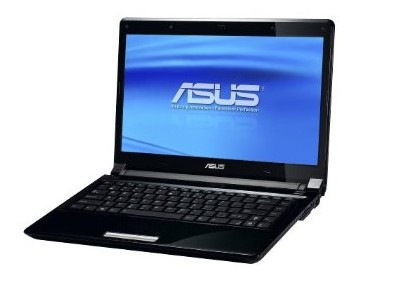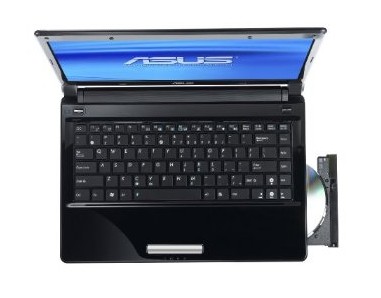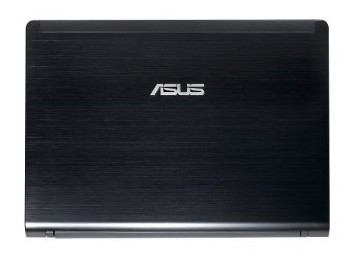Asus UL80VT-WX007X
Specifiche tecniche

Price comparison
Media dei 3 punteggi (dalle 4 recensioni)
recensioni per Asus UL80VT-WX007X
Sorgente: Digital Versus
 EN→IT Archive.org version
EN→IT Archive.org versionThe attractively-designed UL80Vt from Asus is pitched as a model with high performance and good battery life. Yet it doesn’t sacrifice compactness – girth and weight have been kept under control. The Asus UL80Vt is designed with looks, battery life, and performance in mind, and it manages to attain most of its objectives. What we dislike most is the glossy, poor-quality LCD panel and other glossy magnet-for-fingerprints surfaces.
Singola recensione, disponibile online, Medio, Data: 11/27/2009
Valutazione: Punteggio totale: 80%
Sorgente: AnandTech
 EN→IT Archive.org version
EN→IT Archive.org versionAt this point, you should probably already have a good idea of whether the ASUS UL80Vt is going to be the sort of laptop you want to purchase. Provided that raw computational or graphics performance are not your primary concern, the UL80Vt is one of the best laptops we've looked at in a long time. If you've ever considered buying a netbook simply because they're small and get good battery life, the UL80Vt is like a netbook on steroids. It will easily provide twice the performance of your typical Intel Atom-based netbook, and it can do that while still going toe to toe in terms of battery life. The only catch is that it weighs slightly more… and it costs about twice as much as most netbooks.
Singola recensione, disponibile online, Lungo, Data: 10/24/2009
Valutazione: prezzo: 50% prestazioni: 80% mobilità: 70%
Sorgente: Notebookcheck
 DE→IT Archive.org version
DE→IT Archive.org versionSingola recensione, disponibile online, Lungo, Data: 12/14/2009
Valutazione: Punteggio totale: 86% prestazioni: 83% schermo: 78% mobilità: 92% qualità di lavorazione: 90% ergonomia: 86% emissioni: 87%
Sorgente: Sohoa VN Express
 VN→IT Archive.org version
VN→IT Archive.org versionSingola recensione, disponibile online, Cortissimo, Data: 12/01/2009
Valutazione: Punteggio totale: 85%
Commenti
NVIDIA GeForce G210M: La Nividia GeForce G210M o G 210 M è una scheda grafica DirectX 10.1 per portatili che si basa sul core GT218. Come il suo predecessore, sfrutta 16 shaders ma il clock rates è stato notevolmente incrementato. Grazie alla realizzazione in 40nm (rispetto ai 55nm della G110M) il consumo massimo di energia resta invariato.
Soltanto i giochi datasi possono essere giocati in modo fluido con questi chips grafici (se non richiedono troppe prestazioni). I cores con memoria grafica condivisa in questa categoria hanno il vantaggio delle minori emissioni di calore e della maggiore autonomia della batteria. Per ufficio, internet, image processing, e video editing queste schede grafiche sono utilizzabili senza particolari problematiche.
>> Ulteriori informazioni le potete trovare nel nostroConfronto delle schede grafiche e nella nostra Lista dei Benchmark.
Intel Core 2 Duo: Questo è il successore del Core Duo e del Core Solo con una pipeline più lunga ed il 5-20% di velocità in più senza avere maggiore consumo di energia. Come aggiunta al design del Core Duo esiste un quarto decoder, una unità amplificata SSE ed una unità logica aritmetica (ALU) addizionale. Il Core 2 Duo per portatili è identico al processore per desktop Core 2 Duo ma il processore per portatili lavora con un voltaggio inferiore (0.95 a 1188 Volt) ed un Frontside bus clock inferiore (1066 vs 667 MHz). Le prestazioni di portatili con clock equivalenti sono inferiori del 20-25% rispetto ai PCs Desktop a causa del Frontside bus clock inferiore e agli hard disks più lenti.
SU7300: Processore dual core con clock lento e con un basso TDP da 10 Watt.
>>Ulteriori informazioni le potete trovare nel nostroConfronto dei processori per portatili.







